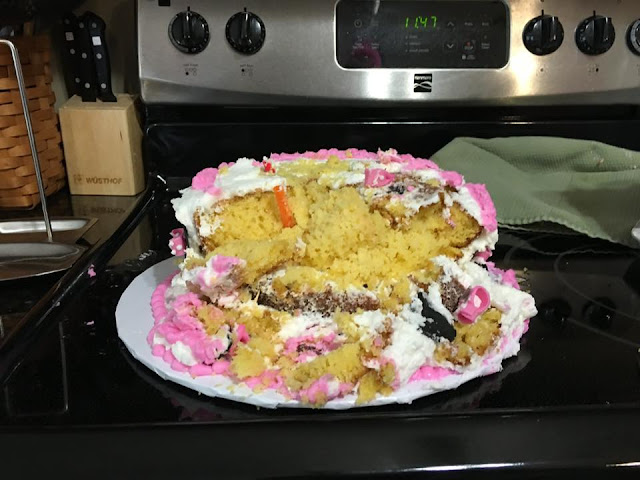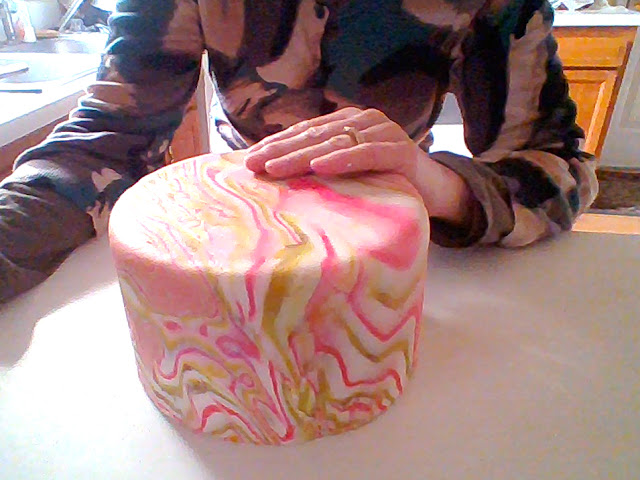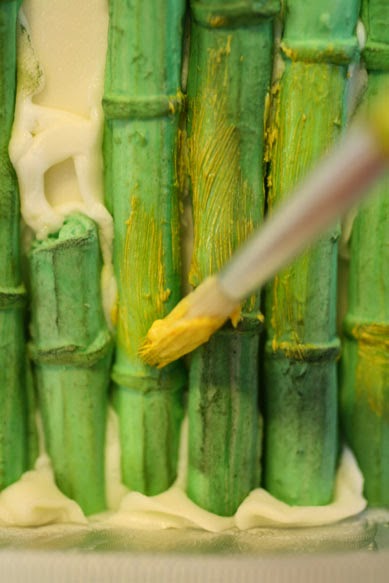Cake decorators tend to argue about the right way to dowel a cake, and they argue about what to use to dowel the cake, too. It really makes people get angry for some reason.
I stick with your basic wooden dowels for most wedding cakes, and have never had a problem.
That’s because I do them the right way.

This article includes affiliate links that will pay a commission if they’re used to purchase something. As an Amazon associate, I earn from qualifying purchases.
The problem with dowels in a cake is that people think it makes the cake damage-proof, and that they guarantee that the cake won’t fall over.
This is definitely not the case, because if you dowel the cake the wrong way you can actually make the cake tier less stable.
It also makes it really hard to cut the cake, since they’ll be dodging pieces of wood or plastic and the amount of cake that will be unusable will be really high.
Dowels can make the cake unstable.
Whenever anyone online is complaining that their cake collapsed, it generally will come out that they dowelled the cake entirely wrong.
And there are plenty of ways to do that.
Wooden dowels aren’t the only option, obviously.
You can use bubble tea straws (that makes me nervous but I know a lot of people who swear by them.)
You can also buy internal support systems that consist of plates and plastic pillars.
For smaller cakes those are overkill, in my opinion. But if you like it, have at it.
I’ll stick with the wooden dowels.
They’re simple, inexpensive, and as long as you use them the right way they work.

Use dowels correctly.
Something that I’ve noticed recently, though, is the tendency of some bakers on tv shows to overdowel their cakes.
By the time they’re done putting all the dowels into the cake, there’s no cake left.
Last night I was watching a show and some guy was putting about fourteen 1/2″ wooden dowels into a 10″ cake.
You’ve got to be kidding me!
I felt bad for the person at the reception site who was supposed to try to find a piece of dowel-free cake when it was time to cut it.
The rule that I’ve always used was that the number of dowels for a tier should be an odd number (don’t know why, might not really make a difference), and that you should take the diameter of the tier that’s going to be stacked on top, cut that in half, then use that number for the number of dowels.
If the number is even, you can add one dowel (or subtract, depending on your cake’s design.)
Of course, you should take the number of tiers that will be stacked on top of the tier into account, but that’s a general guideline.
There’s no reason to make Swiss cheese out of your cakes by inserting too many dowels.
Remember that you still want to have something edible left over after the dowelling and stacking process is done.

How center dowels might not work.
When someone asks about a center dowel I always tell them that I never use one unless there’s a really good reason.
Which made me start thinking about what I would consider a really good reason.
Really good reasons to use a center dowel include…
- If a client is picking a cake up and you’re not delivering it.
- If there’s a strange structure that would benefit from having the extra support.
- If there are tall separators between tiers that are larger than the separators (overhang).
That’s all I can think of.
Don’t bother with a center dowel if:
- The cake is two or three tiers and it’s cold when it’s delivered
- You’re delivering two large stacked tiers and assembling the rest on-site.
Since most of my deliveries fall into those two categories, I don’t bother with a center dowel. some people use one for every tiered cake.
But if you do, you need to be aware of the following: A center dowel is useless unless you build it correctly.

Hammering a sharpened dowel through a tiered cake won’t do a lot to stop sliding or shifting if the cake is room temperature (i.e. soft), or if the dowel isn’t anchored securely into the board below the cake.
If you put a dowel through the cake and not through the board the whole thing can slide right off the board if you hit the brakes too hard.
The top tiers can also shift, and they’ll drag the dowel with them. You’ll end up with a dowel at an angle that’s going through a bunch of shifted tiers.
The point of doing a center dowel is that it will keep the cake upright in case of rough handling. But to do that, it has to be anchored securely into the board. that means that you can either pound it through the board, or that it needs to be attached to the board with brackets or something like that.
That would involve a trip to the hardware store, and would be a center pole situation more than just a center dowel. Just be aware that a center dowel isn’t foolproof.
If you drop a cake a dowel might keep it together, but it can crumble anyway.
It might not even keep the cake together if it’s not cold. And unless it’s anchored correctly it won’t do squat either.
In my experience the best way to make sure a cake will arrive in one piece is to make sure that everything is kept in the fridge before delivery so that it’s cold when it’s transported.
Or to deliver things in sections that you assemble on-site so that there are no worries at all about tiers sliding off of each other.


